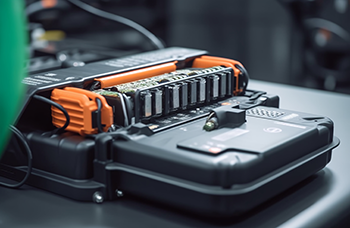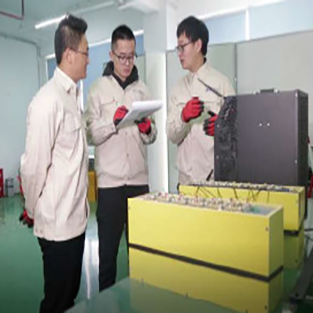
To ensure your lithium battery perseveres for the long haul, it's crucial to implement some basic maintenance practices. First and foremost, avoid intense temperatures. Heat can damage battery performance, so store your devices in a cool, dry space. Regularly inspect your battery for any signs of dysfunction, such as swelling or blotches. Replenishing habits matter too! Avoid fully discharging your battery, as this can impact its lifespan.
- Furthermore, consider using a battery management system to improve charging cycles and prevent excessive power flow.
- Lastly, remember that lithium batteries have a finite lifespan, so be conscious of their age and replace them when necessary.
Unlocking Longevity: Proper Charging Practices for Lithium Batteries
Lithium batteries power a vast array of modern devices, from smartphones to electric vehicles. However, their capacity can decrease over time if not handled properly. One crucial aspect of lithium battery care is comprehending the optimal charging practices.
Firstly, excluding overcharging is paramount. Lithium batteries are susceptible to damage from excessive voltage, which can shorten their lifespan significantly. Many modern devices have built-in circuitry that help prevent overcharging, but it's still advantageous to be mindful of your charging habits.
Secondly, it's important to avoid emptying lithium batteries frequently. While occasional deep discharges are tolerable, regularly utilizing a battery down to zero can stress its internal components and hasten degradation.
Finally, climates can also impact lithium battery performance. Extreme heat or cold can reduce their capacity and lifespan. It's best to store and use lithium batteries in a moderate temperature range, ideally between 15°C and 25°C (59°F and 77°F).
Shield Your Battery from Excess Charging
Lithium-ion batteries power our modern lives, but they're susceptible to damage from overcharging. A smart charger acts as a protector against this risk by monitoring the charging process and automatically shutting off once your device is fully powered. Overcharging can lead to reduced battery life, overheating, and even failure. Investing in a smart charger is a smart move to increase the lifespan of your valuable lithium-ion batteries.

Here are some key features to look for in a smart charger:
- Thermal control to prevent overheating.
- Programmable shut-off when charging is complete.
- Compatibility with various lithium-ion battery types and devices.
Lithium Battery Deep Dive: Understanding Charge Cycles and Degradation

Within the realm of rechargeable batteries, lithium-ion batteries reign supreme. These energy powerhouses are ubiquitous, fueling everything from smartphones to electric vehicles. A crucial aspect of understanding lithium battery capacity lies in comprehending charge cycles and their effect on diminishment. Each complete cycle, encompassing a full discharge followed by a recharge, contributes to the gradual wearing down of the battery's internal components.
- Over time, repeated charge cycles lead to a reduction in the battery's ability to store energy.
- Factors such as high charging temperatures and deep discharges can accelerate this degradation process.
Therefore, understanding how to optimize charge cycles is vital for maximizing the lifespan of lithium-ion batteries. This involves practicing proper charging habits, avoiding extremes in temperature, and implementing storage strategies that minimize stress on the battery's internal structure.

Picking the Ultimate Lithium Battery Charger

Embarking on your journey to select the perfect lithium battery charger can be a daunting task. With a myriad of options flooding the market, navigating the technical jargon and understanding your specific needs can feel overwhelming. This comprehensive guide aims to simplify the process, empowering you with the knowledge to make an informed decision.
- First the fundamental aspects of lithium battery technology, shedding light on its advantages and potential drawbacks.
- Secondly various charger types, ranging from simple trickle chargers to sophisticated smart chargers.
- Additionally, we'll cover crucial factors to take into account selecting a charger, such as voltage, amperage, and charging protocols.
By the end of this guide, you'll be equipped with the tools to choose the ideal lithium battery charger for your particular application.

Lithium Unit Health Checkup: Signs of a Failing Lithium Battery
As lithium-ion batteries age, their performance can gradually decline. This degradation is a natural occurrence, but understanding the signs of a failing battery can help you extend its lifespan and avoid unexpected failures. Keep an eye out for these common indicators: a noticeably reduced battery life, requiring more frequent power-ups; your device turning off unexpectedly or frequently; experiencing slower speed overall; and observing unusual heating while charging or using the device. If you notice any of these warning signs, it might be time to evaluate a battery replacement.
Troubleshooting Common Lithium Battery Charger Issues

Lithium batteries are prevalent in our devices, delivering portable power. However, when their chargers malfunction, it can be frustrating. Several common issues arise with lithium battery chargers, and understanding them can help you troubleshoot the problem.

One common issue is a faulty charger itself. The cable might be damaged or the internal circuitry could be broken. A visual examination of the charger and cable for any signs of damage is always a good starting point.


Another possible reason is a problem with the battery itself. Overcharging can damage the battery, leading to charging issues. Always use the charger that is correctly designed for your battery type and follow the manufacturer's recommendations.

A damaged or loose connection between the battery and the charger can also be difficult. Ensure the contacts are clean and firmly attached.
Ultimately, if you've verified all the above aspects and still face charging issues, it's best to seek help from a professional technician. They can determine the root cause of the problem and offer appropriate solutions.
Lithium Battery Safety First: Avoiding Overheating and Damage
When it arrives to lithium-ion batteries, safety is paramount. These powerhouses can provide the energy we need for our devices, but improper handling can lead to overheating and even damage. To minimize these risks, follow a few crucial guidelines.

First and foremost, avoid exposing your batteries to extreme temperatures. Heat is a Lithium Battery Charger significant culprit in battery degradation and potential fire hazards. Store your devices in a cool, dry place and avoid leaving them in direct sunlight or hot automobiles.

Secondly, always power up your batteries with the appropriate charger and cable. Using incompatible chargers can result in overcharging, which can severely damage the battery and create a safety risk. Additionally, avoid leaving your devices attached for extended periods once they are fully charged.
Finally, keep track of any signs of battery malfunction. This includes swelling, changing color, excessive heat, or an unusual odor. If you notice any of these symptoms, discontinue use immediately and seek professional help for safe disposal.

By following these simple precautions, you can provide the safety and longevity of your lithium-ion batteries, enjoying their benefits without fearing about potential harm.
Maximizing Lithium Battery Performance: Advanced Maintenance Techniques
While basic lithium battery care practices like avoiding extreme temperatures and using the correct charger are essential, taking your maintenance a step further can drastically extend their lifespan and optimize performance. This involves understanding factors likevoltage thresholds and implementing strategies like temperature control systems and periodic deep discharges. For instance, utilizing a dedicated battery monitor can provide valuable insights into your battery's health, allowing you to preemptively address potential issues before they escalate. Furthermore, exploring advanced charging techniques such as constant current-constant voltage (CCCV) or pulse charging can help maintain optimal cell balance and reduce the risk of degradation.
- Utilizing these sophisticated maintenance methods can unlock the full potential of your lithium battery, ensuring reliable performance for years to come.

Ensuring Optimal EV Operation: Lithium Battery Care 101
Owning an electric vehicle offers a unique driving experience. But like any sophisticated machine, your EV requires unique care to keep it running at its peak.
One of the most crucial aspects of EV maintenance is understanding and caring for your lithium-ion battery. The battery powers your vehicle, so treating it right will ensure reliable operation for years to come.

- Battery charging your EV correctly is fundamental. Avoid constantly reaching 100%. Instead, aim for a range between 20%-80%. This reduces strain on your battery.
- Conditions outside the optimal range can negatively influence your battery's performance. Whenever possible, park in shaded areas. In colder regions, consider using a block heater to keep your battery warm.
- Scheduled servicing by qualified technicians can prevent major problems. They can also optimize your battery's performance.
Extend Battery Life: Sustainable Practices for Lithium Batteries

Lithium-ion batteries power a vast array of our modern gadgets. Ensuring their lifespan and minimizing environmental impact, implementing sustainable practices is crucial. Minimize battery depletion by adjusting screen brightness, enabling power-saving modes, and limiting background app activity. Selecting for energy-efficient devices and accessories can also contribute to a longer battery life. Remember to refuel your batteries properly and avoid extreme temperatures that can harm their performance over time.
- Separating devices when not in use helps conserve battery life.
- {Regularlymonitoring your batteries can improve their performance and lifespan.
- {Proper storage of lithium-ion batteries is essential for extending their effectiveness.